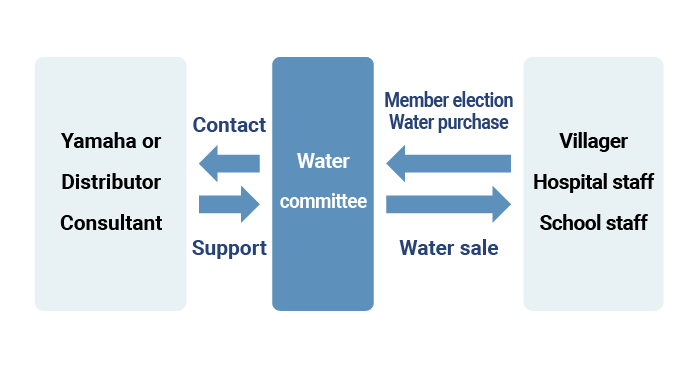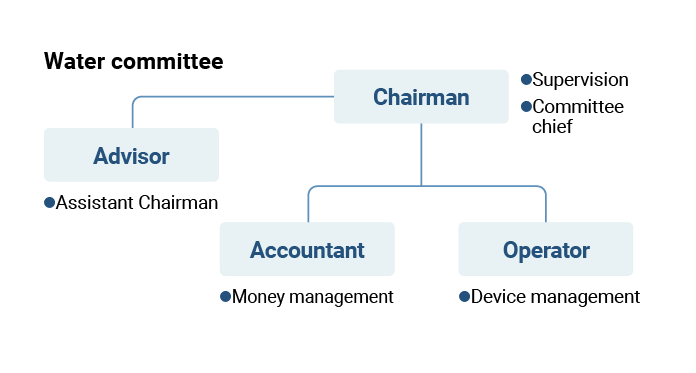Requirements
Conditions and self-governing ability

The requirements for the site will be outlined so that it can be provided to people who are having trouble with clean drinking water, so that it can be provided to people who can operate properly on their own, so that the device can be used without problems for a long time. At the consideration stage of the installation site, we or the local distributors, NGOs, consultants, contractors, etc. commissioned by us will investigate according to the preliminary site survey list. (English PDF:885KB/French PDF:889KB)
Installation Site Requirements
| Survey items | Conditions |
|---|---|
| Needs |
|
| Raw water |
|
| Security |
|
| Service system |
|
| Partner |
|
| Independent operation |
Necessary maintenance
Difficult maintenance is not required, but it is not maintenance-free. It is important to appoint an operator and perform daily maintenance so that you can use it for a long time. The table below shows the outline of the necessary maintenance. We will conduct two-day maintenance training for the operators who have been selected after installation.
| Maintenance | Details | Frequency |
|---|---|---|
| Daily maintenance | Check (water intake, power transmission or generation, main body, flow rate), cleaning (bio pool, Slow Sand Filtration Tank), water quality check (transparency, odor, taste), drain (Raw Water Tank, Pretreatment Tank) | Every day |
| Regular maintenance-1 | Water quality check (pH, residual chlorine concentration), hypochlorous acid solution replenishment | Every week |
| Regular maintenance-2 | Sand scraping (Slow Sand Filtration Tank) | Every 3~4 months |
| Regular maintenance-3 | Sand scraping (Pretreatment tank 4), cleaning (Raw Water Tank 1 & 2, Clean Water Tank 1 & 2, Bio pool) | Every 6 months |
| Water quality check | Water quality inspection by a public institution in accordance with local regulations | Every 6 months |
* Each item requires approximately one hour.
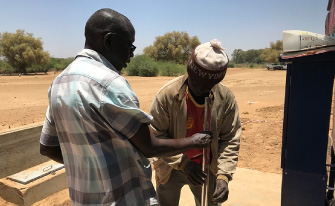
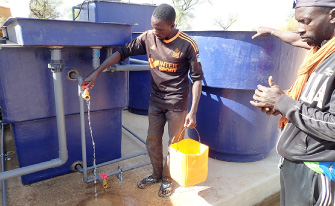

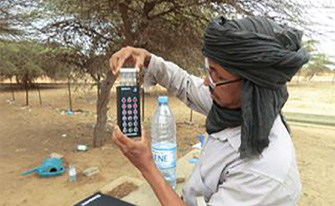
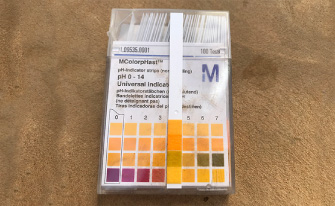
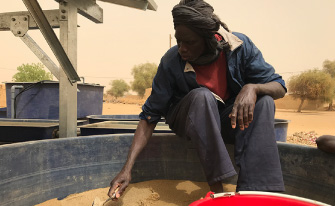
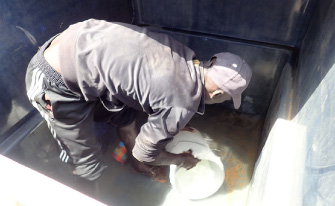
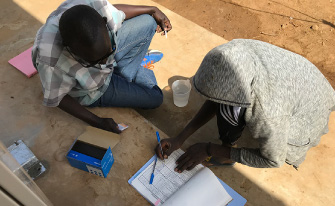
Establishment of a Water Committee
Since the users, such as villages, hospitals, and schools, do not finance the purchase of YCWs themselves, they have little awareness of the need to maintain and manage them after delivery. However, unless the user manages and maintains the device on their own, the device will not last and be unusable. Even with proper maintenance, the pump and other electrical circuits may fail due to natural disasters, etc. Also, the battery has a life, and it needs to be replaced within a few to 20 years depending on usage and environment. A water committee should be established to ensure that users can continue to use the equipment. We will also use the manual for setting up a water committee(PDF:265KB) to explain with the aim of having them save the funds that are essential for that purpose. The following diagram outlines the election and role of the water committee and the role of its members.
